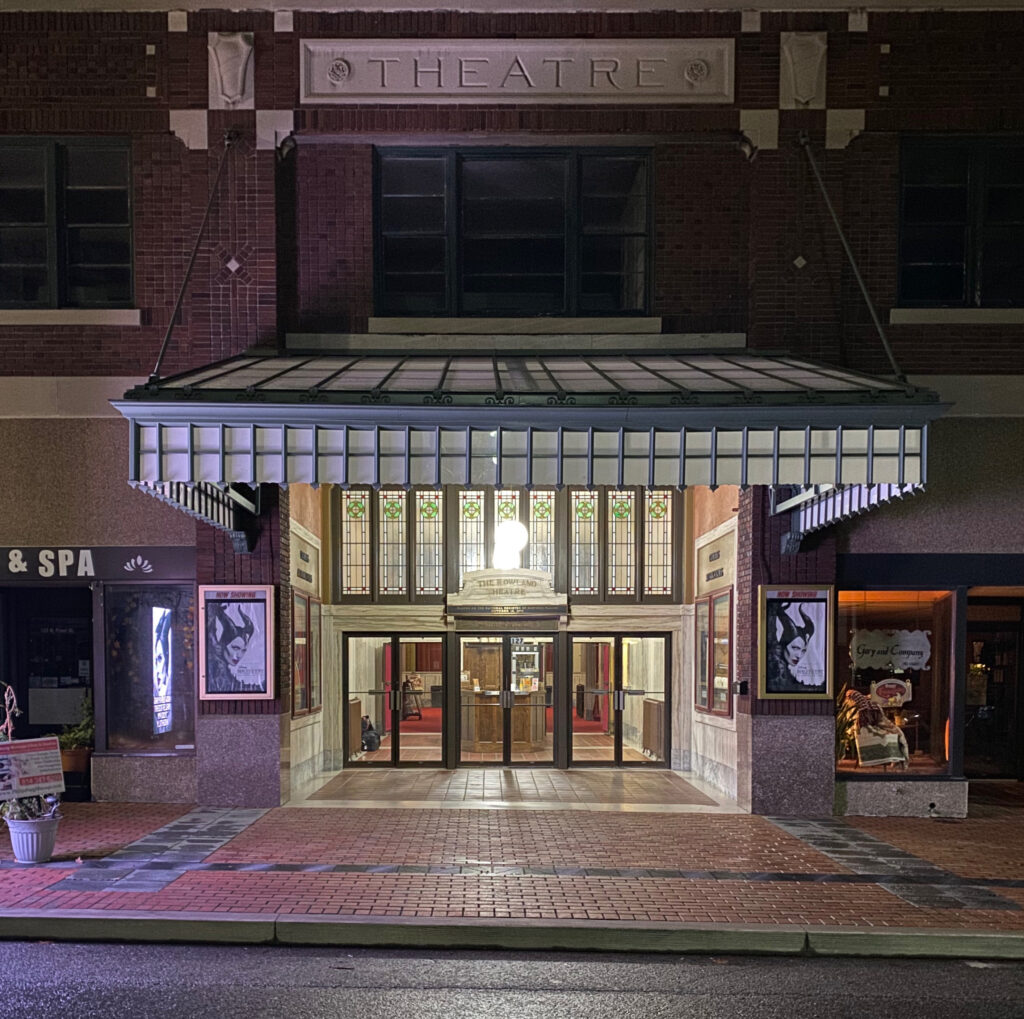The Rowland Theatre in Philipsburg is a historic venue that for more than 100 years has been a popular place for Centre County residents to see films and other events. The downtown theater has closed several times during its history, but was saved by the borough and community volunteers who oversee its operation today.
The playhouse is named for Charles H. Rowland, president of the Moshannon Coal Company, and the Pittsburgh and Susquehanna Railroad, who later was a member of the U.S. House of Representatives. Rowland moved to Philipsburg in 1903 and became one of the town’s biggest benefactors. He was a leader and contributor to many projects, including the Philipsburg Trolley and the Philips Hotel.

In 1910, a fire destroyed a downtown Philipsburg block, including the Pierce Opera House. The charred remains were left on the Front Street site for several years. In 1915, borough leaders approached Rowland about building a first-class movie theater, and by the end of the year he bought the opera house.
The Rowland, as it came to be known, opened on June 4, 1917, with a showing of the silent film, “Within the Law.” The Daily Journal described the theatre at its opening: “The exterior … gives a hint to the magnificence of the interior. The entrance, the lobby and the foyer are marble of the first grade. The aisles and lobby have cork tile floor. A visitor is impressed with the splendor of the place before being shown the seats.”
Listen to “Dead Centre” podcast about Rowland Theatre
During its early years, the Rowland hosted live shows in addition to playing silent films. Charles Rowland died suddenly in 1921 at the age of 60. The Rowland family retained ownership of the theater and leased it to different operators through the years.
Like other movie theaters in Centre County, the Rowland was a popular place for residents to see films through the 1960s. However, the popularity of television, particularly cable television, contributed to declining attendance, and the Rowland closed in 1978.

The Rowland heirs put the building up for sale. Residents formed a committee to try to save the theater and, in 1979, it was placed on the National Register of Historic Places. Chester Hill native Robert Sheriff bought the theater in 1981, renovated it, and reopened it with a sold-out talent show.
Clearfield Bank and Trust purchased the theatre the following year, and in turn, sold it to Cinemette Inc. of Pittsburgh. Cinemette offered the theater to the Philipsburg Borough in 1988. The borough purchased it and leased it to the nonprofit Rowland Theatre Inc. in 1991.
The group of volunteers that makes up the Rowland Theatre board continues to operate it. The use of volunteers has enabled major projects to be accomplished, including a replication of the original marquee and the creation of the Rowland Centennial Plaza for the theater’s 100th anniversary in 2017.
In 2020, new seats were installed in the lower balcony. The original 1917 seats remain in the upper balcony. Prior to the COVID-19 pandemic, the Rowland was open seven nights a week showing films and hosting a variety of events. The theatre has resumed a limited schedule.
A favorite event has been the annual visit of Paragon Ragtime Orchestra, which performs from the orchestra pit and plays the original scores to silent films showing on the big screen, re-creating an evening at the Rowland Theatre from its opening years.
Rebecca Inlow
Sources:
Inlow, Rebecca.The Rowland Story: Beauty from Ashes, 2018.
“New Rowland Theatre: Fine $150,000 Structure to Open Monday Night,” The Daily Journal, June 2, 1917
“Philipsburg Seeking Ways to Save Rowland Theatre,” The Progress, September 29, 1978
“Rowland Ushers in New Philipsburg Era,” Centre Daily Times, Oct. 19, 1981
“Group Looks to Community to Help Re-Open Rowland Theatre,” The Progress, May 18, 1989
First Published: June 10, 2021
Last Modified: February 24, 2025
